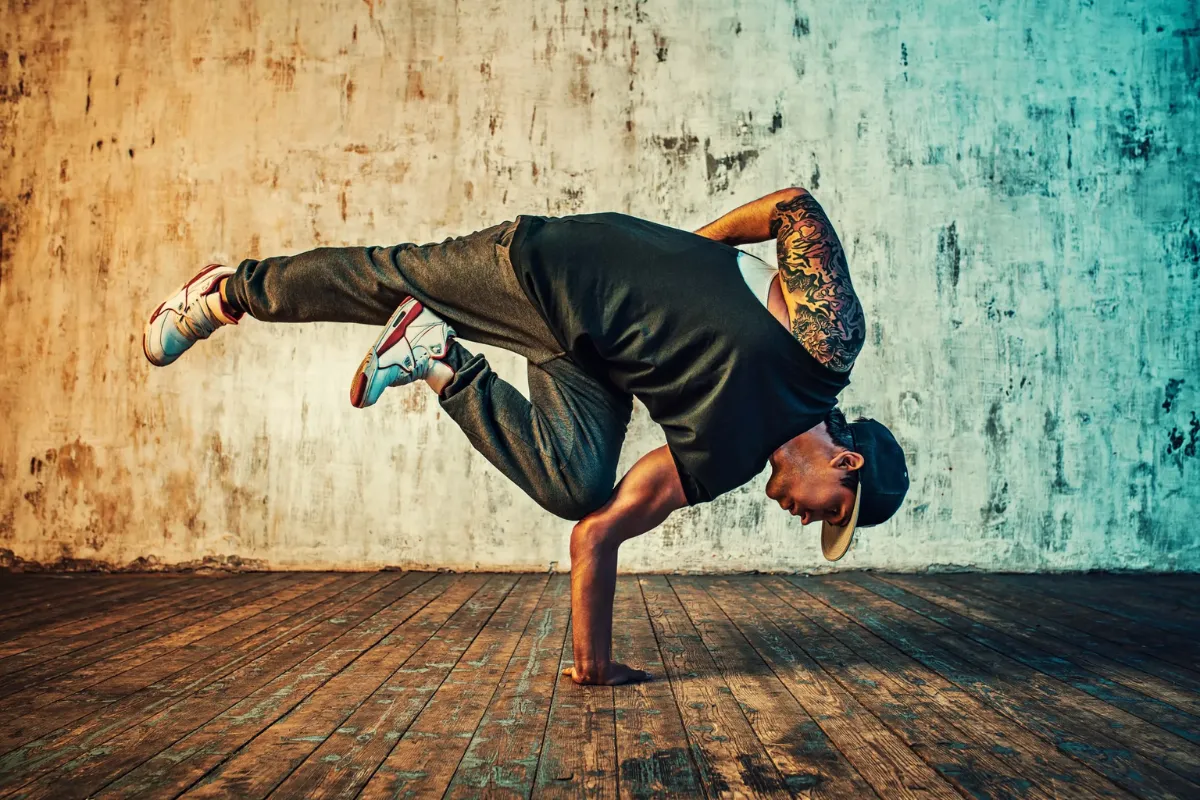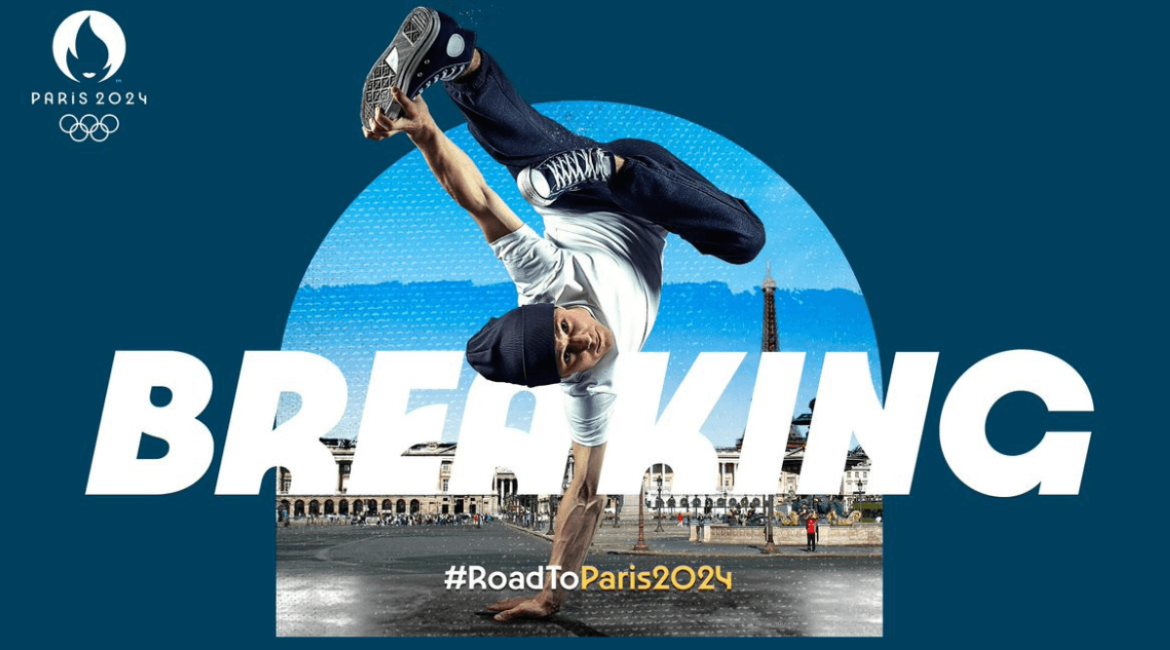As the world eagerly anticipates the 2024 Summer Olympics in Paris, a new sport is set to make its debut on the global stage: breaking. This dynamic urban dance form, often referred to as breakdancing, will bring its unique blend of athleticism, artistry, and cultural expression to the Olympic arena. But beyond the impressive moves and pulsating beats lies a fascinating display of physics in action. In this blog post, we’ll explore the science behind breaking and how it will manifest in the upcoming Olympic competition.
Breaking: A Brief History
Before we dive into the physics, let’s take a moment to appreciate the journey of breaking from its origins to the Olympic stage. Breaking emerged in the late 1970s in the Bronx, New York, as an integral part of hip-hop culture. What began as a form of street dance quickly evolved into a complex art form and athletic discipline.
Over the decades, breaking has grown from local street corners to international competitions, gaining a global following. The International Olympic Committee’s decision to include breaking in the 2024 Games is a testament to its worldwide popularity and recognition as a legitimate athletic discipline.

The Olympic Breaking Format
At the Paris Olympics, breaking will feature two events: one for B-Boys (men) and one for B-Girls (women). Each event will have 16 competitors, making for a total of 32 athletes competing for Olympic glory.
The competition will follow a battle format, which is the traditional way breaking competitions are conducted. In a battle, two breakers face off against each other, taking turns to perform to the same piece of music. Judges evaluate the performances based on a set of criteria, including creativity, personality, technique, variety, performativity, and musicality.
The Three Pillars of Breaking
Breaking moves can be categorized into three main types: top rock, down rock, and freeze. Each of these categories not only showcases different aspects of a breaker’s skill but also demonstrates unique principles of physics.
- Top Rock: The Standing Game
Top rock refers to the moves performed while standing up. These movements often involve intricate footwork and hand gestures, setting the stage for the more acrobatic elements to come. While top rock might seem less physically demanding than other aspects of breaking, it’s a crucial component that demonstrates a breaker’s style, rhythm, and ability to interpret the music.
From a physics perspective, top rock is all about friction and inertia. The quick steps and sudden stops characteristic of top rock rely heavily on the friction between the breaker’s shoes and the floor. This friction allows for rapid changes in direction and abrupt halts in movement.
Inertia, the tendency of an object to resist changes in its state of motion, plays a significant role here. When a breaker wants to stop suddenly, they must overcome their body’s inertia. This is achieved by engaging their muscles and using the friction between their shoes and the floor to create an opposing force to their motion.
The choice of footwear becomes crucial here. Breakers need shoes that provide enough grip for these quick movements while still allowing for smooth transitions to other types of moves.
- Down Rock: Defying Gravity
Down rock, also known as floor work, is where the laws of physics really come into play. These moves involve the breaker getting low to the ground and performing spins, twists, and other acrobatic feats. Some of the most iconic breaking moves, like the windmill or the headspin, fall into this category.
Let’s take a closer look at the backspin, a fundamental down rock move. The physics behind this move is a perfect example of the conversion of linear momentum to angular momentum, and the conservation of angular momentum.
The backspin starts with the breaker on the floor, sweeping one leg in a wide arc to generate linear momentum. As they transition onto their back, lifting both feet off the ground, this linear momentum is converted into angular momentum. The breaker is now rotating around an axis that extends upward from their back’s point of contact with the floor.
The magic happens when the breaker brings their legs and arms inward, closer to this axis of rotation. This action demonstrates the principle of conservation of angular momentum. As the breaker’s mass moves closer to the axis of rotation, their rotation speed increases. Conversely, when they extend their limbs outward again, their rotation slows down.
This principle is the same one that figure skaters use when they pull their arms in during a spin to rotate faster. In breaking, mastery of this principle allows breakers to control their rotation speed and transition smoothly between moves.
- Freeze: The Art of Balance
The freeze is perhaps the most visually striking element of breaking. It occurs when a breaker suddenly stops their movement and holds a pose, often in an inverted position and frequently timed to coincide with a dramatic moment in the music.
Executing a successful freeze requires a deep understanding of balance and center of mass. The center of mass is the point at which the entire mass of an object (in this case, the breaker’s body) can be considered to be concentrated for the purpose of calculations.
For a stable freeze, the breaker must position their center of mass directly above their point of contact with the floor. This often results in seemingly impossible poses where the breaker appears to be defying gravity.
The lower a breaker can position their center of mass, the more stable their freeze will be. This is why you’ll often see breakers in freeze positions with bent arms or legs – they’re actively working to lower their center of mass and increase stability.
The concept of torque also comes into play here. Torque is a rotational force that causes an object to turn around an axis. In a freeze, the breaker must minimize torque to maintain their position. By keeping their center of mass as close to their point of contact with the floor as possible, they reduce the distance over which gravity can create a rotational force, making it easier to hold the pose.

The Physics of Breaking Equipment
While breaking doesn’t require much equipment, the choices a breaker makes about their outfit and gear can significantly impact their performance.
- Clothing
The shirt a breaker wears can affect their ability to perform certain moves, particularly spins. Ideally, a breaker wants a shirt that minimizes friction between their body and the floor during spins. This is why you’ll often see breakers wearing smooth, sometimes shiny fabrics for their shirts.
Interestingly, even small details like lettering or images on the back of a shirt can increase friction and hinder spinning moves. Some breakers opt for long sleeves to reduce friction when sliding on their elbows, as bare skin creates more friction against the floor.
- Headwear
Headwear in breaking serves dual purposes: style and function. From a physics perspective, the ideal breaking hat provides some padding for the head while minimizing friction with the floor. This allows for smooth execution of moves like headspins while offering some protection.
- Footwear
Breakers need shoes that can provide two opposing functions. For top rock, they need shoes with good grip to maximize friction for quick footwork. However, for some down rock moves, less friction might be desirable. Finding the right balance is crucial for optimal performance.
Breaking and Energy Transfer
One aspect of breaking that’s less obvious but equally rooted in physics is the concept of energy transfer. Throughout a breaking set, breakers are constantly transferring energy between different forms:
- Potential energy is stored in their muscles and converted to kinetic energy as they move.
- Kinetic energy is transferred between different parts of their body as they transition between moves.
- During spins and other rotational moves, angular momentum is conserved but transferred between different axes of rotation.
Mastering these energy transfers is what allows top-level breakers to chain moves together smoothly and seemingly effortlessly.
The Role of Momentum in Breaking
Momentum plays a crucial role in many breaking moves. Breakers often use the momentum generated from one move to flow into the next. This is particularly evident in power moves, where the momentum from a spin or rotation is used to launch into another move.
Understanding and controlling momentum is key to executing complex sequences of moves. It’s also what allows breakers to perform seemingly impossible feats, like transitioning from a head spin directly into a freeze.
Breaking and Biomechanics
While we’ve focused primarily on classical physics, it’s worth noting that breaking also involves complex biomechanics. Breakers must have an intuitive understanding of how their bodies move and how different muscle groups interact to produce specific movements.
This understanding allows them to push the boundaries of what’s physically possible, creating new moves and combinations that continue to evolve the art form.
The Future of Breaking: Physics and Innovation
As breaking enters the Olympic arena, we can expect to see continued innovation in the sport. Just as other Olympic sports have seen records broken and new techniques developed over time, breaking is likely to evolve as athletes push the limits of what’s physically possible.
This evolution will undoubtedly be grounded in physics. As breakers gain a deeper understanding of the physical principles underlying their moves, they’ll be able to refine existing techniques and develop new ones.
We might see breakers experimenting with new materials for their clothing or shoes to optimize friction and momentum. We could witness the development of new training techniques based on biomechanical analysis. And we’re almost certain to see new moves that push the boundaries of balance, rotation, and energy transfer.
Conclusion
As breaking makes its Olympic debut in Paris 2024, viewers will be treated to a spectacular display of athleticism, creativity, and culture. But beneath the surface, they’ll also be witnessing a masterclass in applied physics.
From the friction-dependent footwork of top rock to the angular momentum of power moves, and from the delicate balance of freezes to the energy transfers that link it all together, breaking is a physical art form in every sense of the word.
As we watch the world’s top breakers compete on the Olympic stage, we’ll be seeing not just the culmination of years of practice and cultural evolution, but also a dynamic demonstration of physics in action. It’s a testament to the incredible capabilities of the human body and mind, and a reminder that science underlies even the most artistic of human endeavors.
So when you tune in to watch breaking at the Paris Olympics, take a moment to appreciate not just the moves themselves, but the complex interplay of forces that make them possible. You’ll be witnessing not just a dance competition, but a celebration of physics in its most dynamic and creative form.


Leave a reply